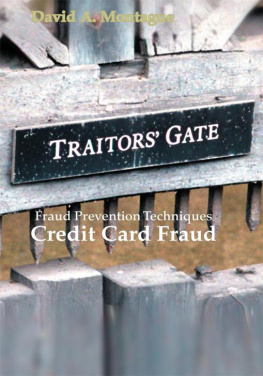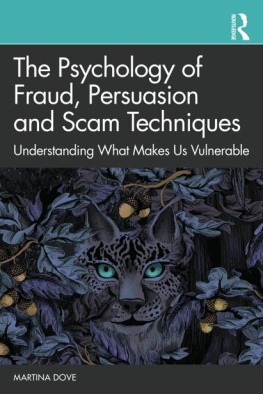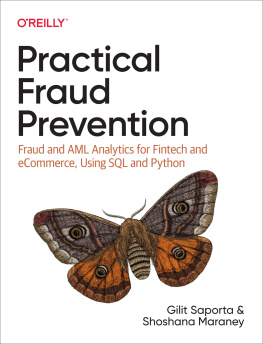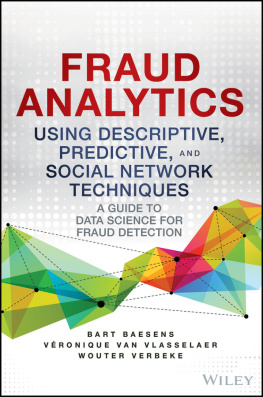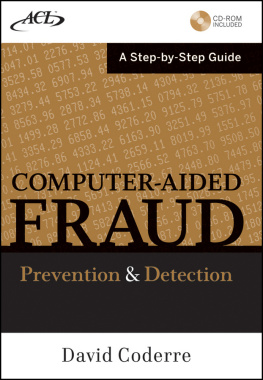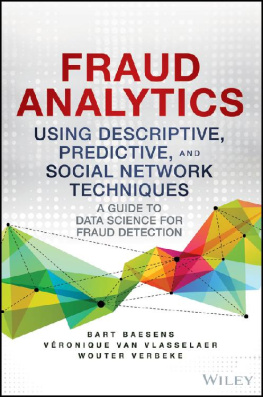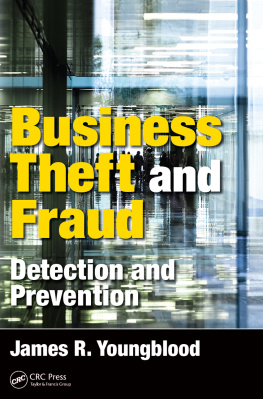Founded in 1807, John Wiley & Sons is the oldest independent publishing company in the United States. With offices in North America, Europe, Asia, and Australia, Wiley is globally committed to developing and marketing print and electronic products and services for our customers' professional and personal knowledge and understanding.
The Wiley Corporate F&A series provides information, tools, and insights to corporate professionals responsible for issues affecting the profitability of their company, from accounting and finance to internal controls and performance management.
Cover image: iStockphoto.com/Alexandr Mitiuc
Cover design: Wiley
Copyright 2014 by John Wiley & Sons, Inc. All rights reserved.
Published by John Wiley & Sons, Inc., Hoboken, New Jersey.
Published simultaneously in Canada.
No part of this publication may be reproduced, stored in a retrieval system, or transmitted in any form or by any means, electronic, mechanical, photocopying, recording, scanning, or otherwise, except as permitted under Section 107 or 108 of the 1976 United States Copyright Act, without either the prior written permission of the Publisher, or authorization through payment of the appropriate per-copy fee to the Copyright Clearance Center, Inc., 222 Rosewood Drive, Danvers, MA 01923, (978) 750-8400, fax (978) 646-8600, or on the Web at www.copyright.com . Requests to the Publisher for permission should be addressed to the Permissions Department, John Wiley & Sons, Inc., 111 River Street, Hoboken, NJ 07030, (201) 748-6011, fax (201) 748-6008, or online at www.wiley.com/go/permissions .
Limit of Liability/Disclaimer of Warranty: While the publisher and author have used their best efforts in preparing this book, they make no representations or warranties with respect to the accuracy or completeness of the contents of this book and specifically disclaim any implied warranties of merchantability or fitness for a particular purpose. No warranty may be created or extended by sales representatives or written sales materials. The advice and strategies contained herein may not be suitable for your situation. You should consult with a professional where appropriate. Neither the publisher nor author shall be liable for any loss of profit or any other commercial damages, including but not limited to special, incidental, consequential, or other damages.
For general information on our other products and services or for technical support, please contact our Customer Care Department within the United States at (800) 762-2974, outside the United States at (317) 572-3993 or fax (317) 572-4002.
Wiley publishes in a variety of print and electronic formats and by print-on-demand. Some material included with standard print versions of this book may not be included in e-books or in print-on-demand. If this book refers to media such as a CD or DVD that is not included in the version you purchased, you may download this material at http://booksupport.wiley.com . For more information about Wiley products, visit www.wiley.com .
Library of Congress Cataloging-in-Publication Data:
Spann, Delena D., 1967
Fraud analytics: strategies and methods for detection and prevention/Delena D. Spann.
pages cm. (The Wiley corporate F & A)
ISBN 978-1-118-23068-8 (hardback) ISBN 978-1-118-28699-9 (ePDF) ISBN 978-1-118-28273-1 (ePub) 1. Fraud. 2. Fraud investigation. 3. FraudPrevention. I. Title.
HV8079.F7S68 2013
658.473dc23
2013019909
To my dad and mom, Peter and Retha Cook Spann, the givers of my life, who both love me just as much as I love myself and to the great cloud of witnesses who keep watch over me
Foreword
My first job as a newly minted accounting graduate wasno surprise hereas an auditor. I worked for a top accounting firm that was one of the Big Eight at the time. This was the 1970s, when accountants kept a set of books on manual ledgers using pencil and paper. I found my job as an auditor to be excruciatingly repetitive. Most of the work, I wryly observed, could be done by a trained monkey: adding columns of figures, reconciling bank statements and observing inventory counts. Back then, auditors spent their time looking for careless errors made by bookkeepers rather than conducting any sort of sophisticated analysis. The term data analytics wasn't even in the vernacular at that time.
Fortunately, long gone are the days of most manual accounting records. In modern electronic ledger systems, ending balances are automatically rolled forward to start the next year; accruals are programmed to occur monthly; and error messages alert you if a journal entry fails to balance. Columns can be totaled instantly and accurately with the click of a button. Auditors' and investigators' time is now spent doing work that actually involves critical thinking.
The digitization of data has made business systems more complex, robust and dynamic. Companies are no longer limited in the amount of numbers they can generate or store. In addition to accounting transactions, information technology systems house research and development, marketing, communication and human resources files. All of this composes what is referred to as big data, which represents the continuous expansion of data setsthe size, variety and speed of generation of which makes it difficult to manage and analyze.
With its ever-increasing size, data analytics have never been more important or useful to a fraud examiner. There are more places for fraud to hide and more opportunities for fraudsters to conceal it. Due to its size and complexity, big data requires the use of creative and well-planned analytics. One of the main advantages of big data environments is that they allow a fraud examiner to analyze an entire population of information rather than having to choose a sample and risk drawing incorrect conclusions in the event of sampling error. Finding fraud in a list of a million transactions is no longer impossible.
To conduct an effective financial analysis, a fraud examiner must take a comprehensive approach. Any direction can (and should) be taken when applying analytical tests. Big data affords fraudsters more opportunities to commit increasingly clever and surreptitious crimes. The more creative fraudsters get in hiding their misdeeds, the more creative the fraud examiner must become in analyzing data to detect these schemes.
Performing fraud analysis techniques, including the necessary data extraction and cleansing, requires a combination of fraud examination methodology and technological savvy. If you are looking to develop these skills, a good start is Delena Spann's Fraud Analytics . Using statistics from the Association of Certified Fraud Examiners' 2012 Report to the Nations on Occupational Fraud and Abuse , Ms. Spann illuminates the devastating impact of fraud on organizations, emphasizing the importance of using the most advanced detection techniques available. Ms. Spann explains why it is imperative that fraud investigators employ data analytics in their efforts to prevent and detect fraud. She then guides the reader through the fundamental data analysis process, from data identification and collection to analysis and insight. Finally, she introduces several popular software programs useful to fraud examiners without endorsing any particular product.
Ms. Spann, using the knowledge she has gained in her experience in the Electronic and Financial Crimes Task Force of the United States Secret Service, provides guidance to fraud examiners looking to incorporate data analysis into their practices. By providing illustrative examples of how to use different software (without commercial endorsement) in real-life fraud case studies, Ms. Spann elucidates the practice of fraud analytics, making it approachable to her readers. Fraud Analytics doesn't purport to have all of the answers, but it is a good start to any anti-fraud professional's library.
Next page

